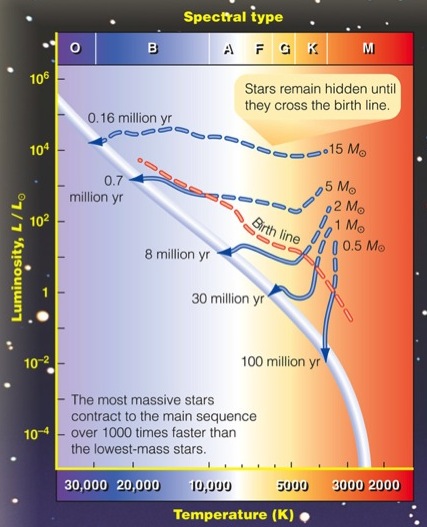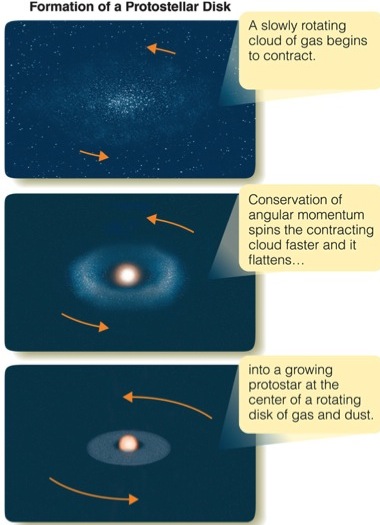* Jeans mass and Jeans radius
* Tracks of protostars and Young Stellar Objects (YSOs, pre-main-sequence stars) towards the main sequence.

[Before the `birth line', protostars are hidden in cocoon nebulae, only visible in infrared. After the birth line, cocoon nebulae disappear and protostars in this stage are sometimes called YSOs, which are visible in optical light.]

Accretion disks (proplyds - protoplanetary disks), bipolar jets, Herbig-Haro objects (HH objects)
* T Tauri stars are stars varying in optical brightness at time scales of days, and show emission lines, indicating the existence of hot, thin gases. Its outflow mass loss rate is at about 10-8 ~ 10-7M⊙/yr. They are believed to be protostars, with mass less than about 3 solar masses.
* Massive protostars do not vary like T Tauri, but, due to strong radiation pressure, also eject and lose masses, which are hot and emit X-rays.
[The cluster NGC2264 is estimated to be 2 million years old, as indicated by its HR diagram, in which some low-mass protostars have not yet got to the main sequence.]
[The cluster Pleiades, M45, is about 50 million years old. Some of its massive stars have evolved away from the main sequence.]